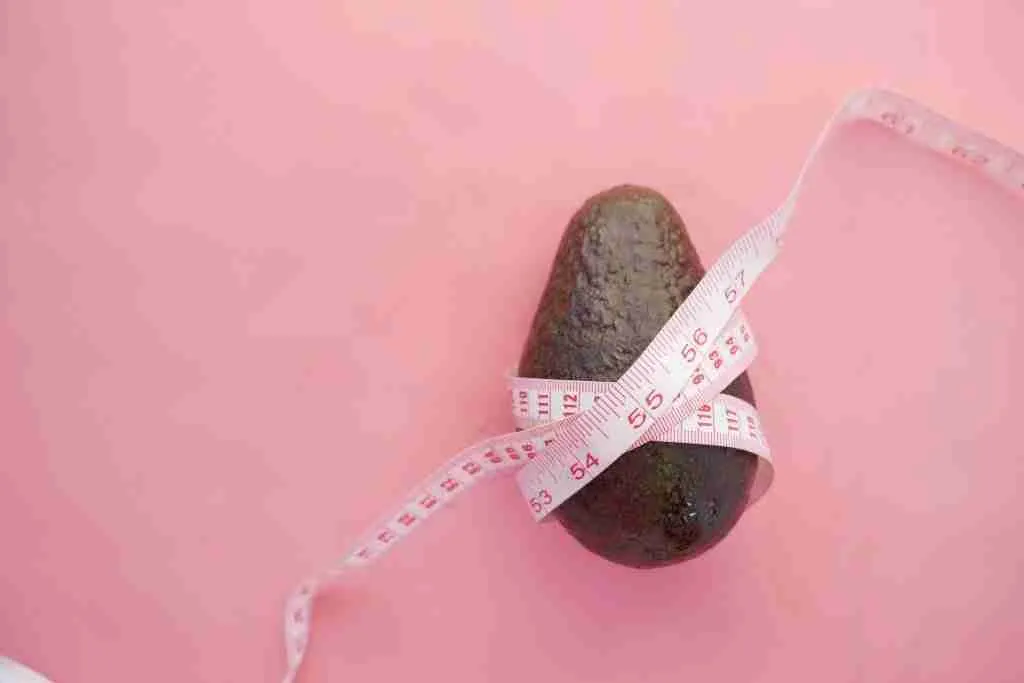Table of Contents
ToggleAre you frustrated with your keto weight loss journey hitting a standstill? You’re not alone. Many people experience plateaus on the ketogenic diet, but don’t worry – there’s hope! In this comprehensive guide, we’ll explore 7 science-backed strategies to help you break through your keto plateau and reignite your weight loss.
From reassessing your carb intake to optimizing protein consumption, we’ll dive into the key factors that can make or break your progress. We’ll also uncover:
• The hidden culprits behind stalled weight loss
• How to leverage intermittent fasting for renewed fat burning
• The crucial role of exercise diversity in overcoming plateaus
• Stress management techniques to support your weight loss goals
Get ready to revitalize your keto journey and achieve the results you’ve been working towards. Let’s break that plateau together!
Understanding Weight Loss Plateaus on Keto

Have you ever felt like you’re stuck on your keto weight loss journey? You’re not alone. Weight loss plateaus are a common hurdle for many following a ketogenic diet.
Imagine you’re climbing a mountain. At first, the ascent is steep and progress is noticeable. But suddenly, you hit a flat stretch. That’s your weight loss plateau.
On keto, this often happens after an initial period of rapid weight loss. Your body, clever as it is, adapts to your new eating habits. It’s like your metabolism is saying, “Hey, I’ve got this figured out now!”
But don’t worry, this doesn’t mean your ketogenic diet has stopped working. It’s just your body’s way of recalibrating.
During a plateau, you might maintain the same weight for weeks, despite sticking to your keto routine. It can be frustrating, but remember, it’s a normal part of any weight loss journey.
The good news? Plateaus are temporary. With the right strategies, you can break through and continue your climb to your weight loss goals.
💡 Key Takeaways: Weight loss plateaus are a normal, temporary phase in the keto journey, signaling your body’s adaptation to your new eating habits.
Definition and Prevalence of Plateaus in Keto Diets
A weight-loss plateau is a period where your weight remains stable despite maintaining your diet and exercise routine. It’s like hitting the pause button on your weight loss.
On keto, plateaus are surprisingly common. In fact, about 5-7 weeks into the diet, many people experience their first plateau.
Why does this happen? The causes of a weight loss plateau can vary:
– Your body adapting to fat as its primary fuel source
– Changes in hormone levels
– Decreased calorie burn as you lose weight
Remember, plateaus don’t mean failure. They’re just a sign that your body is adjusting to its new normal.
The Science Behind Keto Weight Loss Plateaus

Let’s dive into the fascinating science behind keto weight loss plateaus. It’s like your body is playing a game of adaptation chess with your diet!
When you start keto, your body experiences a significant shift in energy metabolism. Initially, you lose weight rapidly, often due to water loss as your body depletes its glycogen stores. But as you continue, your body composition change becomes more subtle.
The Metabolic Chess Game
Imagine your metabolism as a thermostat. When you reduce calories, it adjusts to conserve energy. This is called metabolic adaptation. Your body becomes more efficient, requiring fewer calories to function.
For example, if you initially lost weight eating 1800 calories a day, your body might eventually maintain weight at this intake. It’s like your metabolism is saying, “I’ve got this figured out now!”
The Hormone Factor
Hormones play a crucial role too. As you lose weight, levels of hormones that regulate hunger and fullness can change. Ghrelin, often called the “hunger hormone,” may increase, making you feel hungrier.
The Energy Equation
Remember the concept of energy balance? Weight loss occurs when energy expenditure exceeds intake. But as you lose weight, your energy expenditure naturally decreases. A smaller body simply requires less energy to maintain.
Think of it like downsizing from a mansion to an apartment. The apartment needs less energy to heat and cool, just as your smaller body needs fewer calories to function.
💡 Key Takeaways: Keto weight loss plateaus are a result of complex bodily adaptations, including metabolic changes, hormonal shifts, and decreased energy requirements as you lose weight.
Metabolic Adaptation and Its Impact
Metabolic adaptation is your body’s survival mechanism. It’s like your body has a built-in energy conservation mode.
When you consistently eat fewer calories, your body thinks, “Uh-oh, food might be scarce. Let’s slow things down.” It becomes more efficient, burning fewer calories to perform the same tasks.
This impacts your energy balance. Even though you’re eating the same amount, you’re burning less, potentially stalling weight loss.
Moreover, hormonal changes occur. Levels of leptin, which signals fullness, decrease. Meanwhile, ghrelin, the hunger hormone, increases. It’s like your body is saying, “Hey, we need more food here!”
7 Science-Backed Strategies to Break Your Keto Plateau

Hitting a plateau can feel like you’re stuck in quicksand. But don’t worry! We’ve got seven science-backed strategies to help you break free and reignite your weight loss.
1. Reassess Your Carb Intake
On keto, carbs are like that friend who always wants to crash on your couch. A little is okay, but too much can overstay its welcome.
It’s time to play detective with your diet. Are hidden carbs sneaking in? Even keto-friendly foods can add up. For instance, that handful of nuts you snack on? It might contain more carbs than you think.
Start by tracking your carb intake meticulously. Aim for 20-50 grams of carbs per day, depending on your personal tolerance. Remember, everyone’s carb threshold for maintaining ketosis is different.
Try this: Keep a food diary for a week. You might be surprised to find sneaky carbs in places you least expect. That sugar-free gum? It counts. That lemon in your water? Yep, that too.
By fine-tuning your carb intake, you’re ensuring your body stays in that fat-burning keto zone. It’s like giving your weight loss engine a tune-up!
Identifying and Eliminating Hidden Carbs
Hidden carbs are sneaky culprits. They lurk in unexpected places:
– Sauces and dressings
– Processed “keto” foods
– Some vegetables (e.g., onions, garlic)
– Nuts and seeds
Read labels carefully. Watch out for ingredients like maltitol or other sugar alcohols. They may impact your blood sugar more than you think.
2. Optimize Your Protein Consumption
Protein is like the Goldilocks of nutrients on keto – you need just the right amount.
Too little protein can lead to muscle loss. Too much can kick you out of ketosis through gluconeogenesis, where your body converts excess protein to glucose.
Aim for about 0.8 grams of protein per pound of lean body mass. For a 150-pound person with 25% body fat, that’s about 90 grams of protein daily.
Pay attention to portion sizes. A serving of meat should be about the size of your palm. Use a food scale if needed to ensure accuracy.
Remember, quality matters too. Opt for grass-fed meats and wild-caught fish when possible.
3. Adjust Your Fat Intake
On keto, fat is your friend, but it’s not a free-for-all. Think of fat like fuel for your car. You need enough to run efficiently, but overfilling won’t make you go faster.
If you’re plateauing, try slightly reducing your fat intake. This creates a subtle calorie deficit, encouraging your body to burn stored fat.
Incorporate healthy fats like:
– Avocados
– Olive oil
– Fatty fish
– Nuts and seeds
But remember, portion control is key. A tablespoon of oil here, half an avocado there – it all adds up.
Try replacing some dietary fat with lean proteins. This can help preserve muscle mass while creating that slight calorie deficit.
4. Implement Intermittent Fasting

Intermittent fasting is like giving your metabolism a mini-vacation. It can help reset your body’s fat-burning mode.
Start with a simple 16/8 method: Fast for 16 hours, eat within an 8-hour window. For example, finish dinner by 8 PM and don’t eat again until noon the next day.
During fasting hours, your body shifts from burning glucose to burning fat for energy. It’s like flipping a metabolic switch!
Remember to stay hydrated during fasting periods. Black coffee or unsweetened tea are okay too.
When you do eat, focus on nutrient-dense, keto-friendly foods. This ensures you’re meeting your nutritional needs within your eating window.
5. Diversify Your Exercise Routine
Exercise is like a conversation with your body. If you always say the same thing, it stops listening.
Mix up your daily routine. If you’re a cardio fan, add strength training. If you lift weights, try some high-intensity interval training (HIIT).
For example:
– Monday: 30-minute brisk walk
– Tuesday: 20-minute HIIT workout
– Wednesday: Yoga or stretching
– Thursday: Strength training (focus on major muscle groups)
– Friday: 30-minute swim or bike ride
– Saturday: Active rest (like gardening or cleaning)
– Sunday: Rest
This variety challenges your body in different ways, potentially boosting your metabolism and breaking through that plateau.
6. Manage Stress and Prioritize Sleep
Stress and poor sleep are like party crashers at your weight loss celebration. They can sabotage your efforts by messing with your hormones.
Chronic stress increases cortisol, which can lead to increased appetite and cravings. It’s like your body thinks it’s constantly under threat and needs extra energy.
Prioritize stress-management techniques:
– Daily meditation or deep breathing exercises
– Regular exercise
– Journaling
– Spending time in nature
For sleep, aim for 7-9 hours per night. Create a bedtime routine:
– Dim lights an hour before bed
– Avoid screens
– Try reading or gentle stretching
Remember, managing stress and improving sleep are important aspects of any weight loss program.
7. Track and Adjust Your Calorie Intake
Even on keto, calories matter. It’s possible to overeat keto-friendly foods, stalling your weight loss.
Start by tracking your calorie intake for a week. Use a food diary or app. You might be surprised at how those extra bites add up!
To create a calorie deficit:
– Reduce portion sizes slightly
– Cut out calorie-dense snacks
– Increase low-calorie, nutrient-dense foods (like leafy greens)
Remember, a modest deficit of 300-500 calories per day is often sufficient. Drastic cuts can backfire, slowing your metabolism.
Adjust your intake based on results. If you’re not losing weight after a few weeks, reduce calories a bit more.
💡 Key Takeaways: Breaking a keto plateau involves fine-tuning various aspects of your diet and lifestyle, from reassessing carb and calorie intake to diversifying exercise and managing stress.
Beyond the Scale: Alternative Progress Indicators

While the number on the scale can be informative, it’s not the only measure of progress. Your body weight is just one piece of the puzzle.
Think of your body as a complex machine. Just like a car isn’t judged solely by its weight, your health and progress shouldn’t be measured by a single number.
Non-Scale Victories (NSVs)
These are the unsung heroes of your weight loss journey. NSVs are like little gold stars that show you’re making progress, even when the scale doesn’t budge.
Common NSVs include:
– Clothes fitting better
– Increased energy levels
– Improved mood and mental clarity
– Better sleep quality
– Reduced inflammation and joint pain
For example, you might notice your wedding ring feels looser, or you can climb stairs without getting winded. These are all signs of positive change!
Body Measurements
Your waist circumference can be a more reliable indicator of fat loss than body weight alone. Try measuring your waist, hips, thighs, and arms monthly.
Progress Photos
Sometimes, the mirror doesn’t tell the whole story. Take photos every few weeks in the same lighting and clothing. You might be surprised at the changes you see!
Blood Markers
Your blood sugar, cholesterol levels, and blood pressure can all improve on keto, even if the scale doesn’t move. Regular check-ups can reveal these hidden improvements.
How You Feel
Don’t underestimate the power of how you feel. Increased energy, better mood, and improved self-confidence are all valuable indicators of progress.
Remember, weight loss isn’t always linear. Your body is constantly changing, even when the scale isn’t.
💡 Key Takeaways: Progress on keto extends far beyond the scale, encompassing improved body measurements, energy levels, mood, and overall health markers.
Overcoming Emotional and Habitual Challenges

Weight loss isn’t just about food and exercise. It’s also a mental game. Emotions and habits play a huge role in our eating behaviors.
Think of your emotions as a rollercoaster. Sometimes, they can take you for a wild ride, leading to stress eating or giving up on your goals.
Here are some strategies to stay on track:
1. Identify your triggers: Do you reach for snacks when stressed? Bored? Keep a mood and food diary to spot patterns.
2. Find alternatives: Instead of eating when stressed, try deep breathing, a short walk, or calling a friend.
3. Practice mindful eating: Eat slowly, savoring each bite. This helps you recognize true hunger vs. emotional eating.
4. Celebrate small wins: Did you resist a craving? Give yourself a non-food reward!
5. Build new habits: Replace old, unhealthy habits with new ones. For example, swap your nightly ice cream for a relaxing tea ritual.
Remember, changing habits takes time. Be patient with yourself. It’s like learning to ride a bike – you might wobble at first, but with practice, it becomes second nature.
Hunger can also be tricky. Sometimes, what feels like hunger is actually thirst. Try drinking a glass of water when you feel hungry and wait 15 minutes.
💡 Key Takeaways: Overcoming emotional and habitual challenges in your keto journey involves identifying triggers, building new habits, and practicing mindful eating strategies.
Long-Term Strategies for Sustained Weight Loss
Achieving long-term weight loss is like running a marathon, not a sprint. It’s about making sustainable lifestyle changes that you can stick to for years to come.
Here are some strategies backed by systematic reviews:
1. Set realistic goals: Aim for steady, gradual weight loss of 1-2 pounds per week. This is more sustainable than rapid weight loss.
2. Build a support system: Surround yourself with people who encourage your healthy lifestyle. Join online keto communities or find a workout buddy.
3. Plan for maintenance: Think about how you’ll maintain your weight once you reach your goal. This might involve gradually increasing calories while staying keto.
4. Practice self-monitoring: Regularly track your food intake, weight, and measurements. This helps you stay accountable and catch any slips early.
5. Develop coping strategies: Prepare for challenging situations like holidays or stressful periods. Have a plan to stay on track.
6. Focus on nutrition, not just macros: While keto is about low-carb, high-fat, ensure you’re getting a variety of nutrients from whole foods.
7. Stay active: Regular physical activity is crucial for long-term weight maintenance. Find activities you enjoy and make them part of your routine.
8. Be flexible: Life happens. If you have an off day, don’t beat yourself up. Just get back on track with your next meal.
Remember, the goal is progress, not perfection. Every healthy choice you make is a step in the right direction.
💡 Key Takeaways: Sustainable long-term weight loss on keto involves setting realistic goals, building support systems, regular self-monitoring, and developing flexible strategies to navigate life’s challenges.
The Role of Ketosis in Breaking Plateaus

Ketosis is like your body’s fat-burning superpower. It’s the state where your body shifts from using glucose as its primary fuel to burning fat for energy.
On a ketogenic diet, maintaining ketosis is key to breaking through plateaus. When you’re in ketosis, your body becomes more efficient at using fat for fuel, both from your diet and your body’s stored fat.
To ensure you’re in ketosis:
1. Keep carbs low (typically under 50g per day)
2. Moderate protein intake
3. Increase healthy fats
You can check your ketone levels using urine strips, blood meters, or breath analyzers. Aim for a reading between 0.5-3.0 mmol/L for nutritional ketosis.
Remember, being in ketosis doesn’t guarantee weight loss, but it creates an environment where fat loss is more likely to occur.
💡 Key Takeaways: Maintaining ketosis through careful macronutrient balance is crucial for leveraging the fat-burning potential of the ketogenic diet and overcoming plateaus.
Hydration and Its Impact on Weight Loss
Water is the unsung hero of weight loss. It’s like the oil that keeps your body’s engine running smoothly.
On keto, you need plenty of water. The diet has a natural diuretic effect, meaning you lose more water initially.
Proper hydration:
– Helps control hunger (thirst often masquerades as hunger)
– Supports metabolism
– Aids in the breakdown of fat (a process called lipolysis)
Aim for at least 8 glasses of water daily. You can also get fluids from other sources like herbal tea or low-carb vegetables.
A simple way to check: if your urine is pale yellow, you’re well-hydrated.
Conclusion
Breaking through a keto weight loss plateau requires patience, perseverance, and a willingness to adapt. By implementing these seven science-backed strategies, you can reignite your weight loss journey and achieve your goals. Remember, plateaus are a normal part of any weight loss process, signaling that your body is adapting to its new composition.
Don’t be discouraged if progress seems slow; focus on non-scale victories and overall health improvements. Stay committed to optimizing your carb and fat intake, incorporating intermittent fasting, diversifying your exercise routine, and managing stress levels. These adjustments, combined with proper hydration and a personalized approach, can help you overcome plateaus and continue your transformation.
Ultimately, the key to long-term success lies in viewing your keto journey as a lifestyle rather than a quick fix. Embrace the process, celebrate small wins, and trust in the science-backed principles that have brought you this far. With determination and the right strategies, you can break through your plateau and achieve renewed weight loss success on your ketogenic journey.





